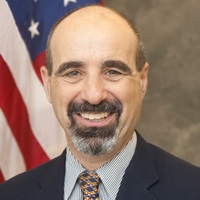 By Andy Bindman, M.D., Director of AHRQ
By Andy Bindman, M.D., Director of AHRQ
Twitter: @AHRQNews
The concept of using evidence to improve the quality and value of health care is not new. But evolving features of the U.S. health care system make the potential of a continuously learning health system now more achievable than ever. The learning health system—that is, a system of care that makes the best possible use of our large and growing body of evidence—was the focus of an energetic discussion at AHRQ’s recent National Advisory Council meeting.
The need for systems to expand and improve their use of evidence was described comprehensively in the 2012 Institute of Medicine report Best Care at Lower Cost: The Path to Continuously Learning Health Care in America. The report defined a learning health system as one that “is designed to generate and apply the best evidence for the collaborative healthcare choices of each patient and provider; to drive the process of discovery as a natural outgrowth of patient care; and to ensure innovation, quality, safety, and value in health care.”
In my view, the element that sets a learning health system apart is its ability to collect, adopt, and apply evidence in a systematic way. In most cases today, clinicians work hard to keep up with the latest journal articles and fulfill requirements for continuing education. But that’s not enough. In a learning health system, the following occurs:
- Health system leaders are committed to improvement and to their role in creating a culture supporting quality improvement.
- Clinicians act as an integrated group as they adopt and apply the latest evidence.
- Evidence is systematically gathered and updated by the health system.
- Evidence is disseminated back to frontline clinicians using informational technology to ensure its timely availability at the point of care.
- Clinicians communicate evidence to patients in a way that supports their participation in informed shared decisionmaking for personalized care.
- Variation in treatment within the system is collected and analyzed to inform and improve care.
- Outcomes are consistently assessed and, when appropriate, protocols are reevaluated, based on that evidence, creating a continuous feedback cycle encouraging constant quality improvement.
I’ll acknowledge that these goals comprise a tall order. But recent developments are working in our favor.
First, changes in how care is paid for are creating positive incentives for organizations and clinicians to engage in quality improvement. Second, health systems are integrating and looking for ways to bring operations together, regardless of setting, allowing for better access to broader sets of outcomes data. Third, electronic tools are emerging that can support evidence-based protocols and greater patient engagement in decisionmaking. Finally, electronic health records have become the standard, not the exception, in large health systems. Together, these developments in digitized “big data” improve our prospects for conducting faster, better research and transfer new evidence to the bedside.
This makes the time right for the learning health system to take significant steps forward. And I’m excited about AHRQ’s growing role in this area. We provide a robust source of evidence, for example, via our Evidence-Based Practice Centers research network. Our EvidenceNow project is working to improve heart health by supporting the integration of evidence in primary care practices.
Meanwhile, AHRQ has made strong investments in projects that explore the potential of health information technology to capture and share evidence. Our Comparative Health System Performance Initiative is aiming to define and share the characteristics of the highest performing health systems. And we are actively exploring how we might direct our investments in training toward individuals working in learning health systems.
As our recent National Advisory Council meeting showed, AHRQ is committed to serving as a gathering place for ideas and experimentation. We’re not there yet. And some of the brightest minds in health care offer alternative visions to the learning health system. But I’m bullish on our future in this arena. Stay tuned to these pages as we look for the best ways to collect and apply evidence in order to more fully define and develop the learning health system.
This article was originally published on AHRQ Views Blog and is republished here with permission.
